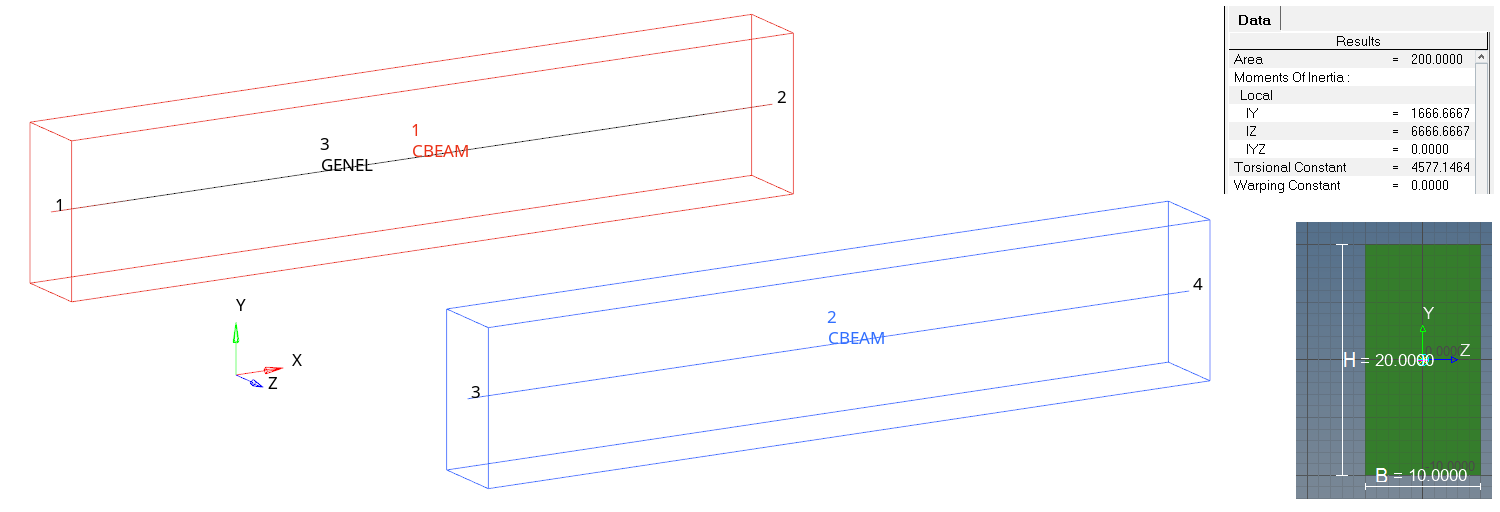OS-E: 0710 Application of a GENEL Element
GENEL elements can be used to define kinematic responses between two nodes.
The GENEL element is defined with Grid ID's and a 12 by 12 matrix in the Basic system. Associated degrees of freedom are the three translations and three rotations at both nodes.
Model Files
Model Description

- Property
- Young’s Modulus
- 1MPa
- Poisson's Ratio
- 0.3
- Property
- Young’s Modulus
- 210 GPa
- Poisson's Ratio
- 0.3
The only purpose of Element 1 is to provide visualization in HyperView. The GENEL element is also applied between grids 1 and 2. The GENEL element is defined using the Euler-Bernoulli beam theory, which does not consider shear deformation like the Timoshenko-based beam used in OptiStruct. The beam is clamped at the left end and four subcases are defined for each, including a single force or moment component at the right end. The beam length is 100mm and shear deformation is rather insignificant. Element 2 is slightly more flexible in bending load cases than GENEL.

- E
- Young's modulus
- A
- Cross-sectional area
- L
- Length
- I
- Second moment of inertia
- G
- Shear modulus
- J
- Polar moment of inertia
- a, b, …, h
- Populated in the 12 by 12 stiffness matrix (see Figure 2, left).

Results
